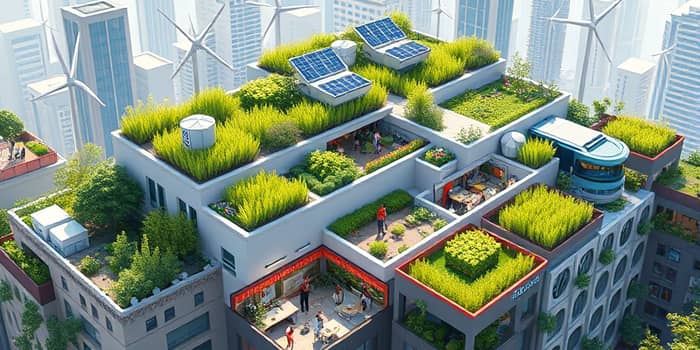
As the world embraces the urgent need for environmental stewardship, a new movement emerges at the nexus of design, finance, and community: the Green Guild. This coalition of architects, developers, investors, and citizens champions sustainable designs often command rental premiums while nurturing the planet.
Green guilds embody an ethos that transcends traditional construction paradigms. Rooted in the philosophies of sustainable and green design, these guilds prioritize holistic life-cycle performance over short-term gains.
Where green design emphasizes immediate energy efficiency and material selection, sustainable design pursues a balanced integration of environmental, social, and economic concerns from conception through operation[1][6][7]. The collaborative nature of guilds mirrors the integrated design processes engage stakeholders philosophy, ensuring that architects, engineers, and end-users unite under shared sustainability goals.
Financial markets are increasingly recognizing the value proposition of green guilds. From lower operating expenses to higher asset valuations, sustainable buildings deliver measurable returns.
Data reveals that buildings contribute to approximately 39% of US CO₂ emissions[2]. By adopting green guild standards, stakeholders can reduce environmental footprint throughout lifecycle, transforming operating expenses into long-term dividends.
At the heart of every green guild project lie five guiding elements. These principles establish a framework for resilience, efficiency, and social value.
Beyond these pillars, guilds extend to net zero operational carbon targets by 2030 (WorldGBC) and robust waste reduction, ensuring each project aligns with global climate imperatives.
Continuous advancement underpins green guild success. Modern construction methods like modular prefabrication drastically minimize on-site waste, while digital tools enable real-time monitoring of carbon footprints.
Platforms for investors increasingly factor ESG performance and post-occupancy evaluations provide feedback loops, refining designs in subsequent phases. Simultaneously, stakeholder education and certification programs foster a culture of shared accountability.
Several marquee projects illustrate the power of green guild principles. The Italian Pavilion at the World Expo showcased natural ventilation, recycled materials, and adaptive shading—demonstrating how design ingenuity triumphs even in extreme climates.
Similarly, urban high-rises with green roofs and living walls integrate biodiversity while reducing heat island effects. By embracing these techniques, developers deliver healthier indoor environments that measurably boost productivity, well-being, and resilience for occupants[2][7].
Urbanization accelerates the imperative for sustainable cities. By 2050, nearly 68% of humanity will live in cities (UN). Green guilds pioneer comprehensive urban strategies—from rooftop farms to district-level energy sharing.
The push toward net zero operational carbon builds on interim goals: all new buildings delivering zero emissions by 2030. Achieving this requires robust stakeholder collaboration, advanced carbon tracking, and full life-cycle assessments.
Moreover, green guilds align with the UN Sustainable Development Goals, uniting social equity, economic growth, and environmental stewardship. By embedding these frameworks, developers and investors position themselves at the vanguard of global responsibility.
The true strength of green guilds lies in community. Engaging residents, municipal authorities, and supply-chain partners early fosters shared vision and minimizes costly revisions.
Through this participatory approach, guild members develop trust, drive innovation, and cultivate a lasting legacy of resilience.
Green guilds represent more than a trend; they are the blueprint for a financially robust, environmentally conscious future. By marrying rigorous design processes with strategic investment frameworks, stakeholders can build assets that thrive in any climate while safeguarding resources for generations to come.
Embrace the green guild ethos today. Whether you are an architect, developer, investor, or community leader, your participation catalyzes change. Together, we can sculpt skylines that reflect our highest values—and secure a legacy of prosperity in harmony with the planet.
References





